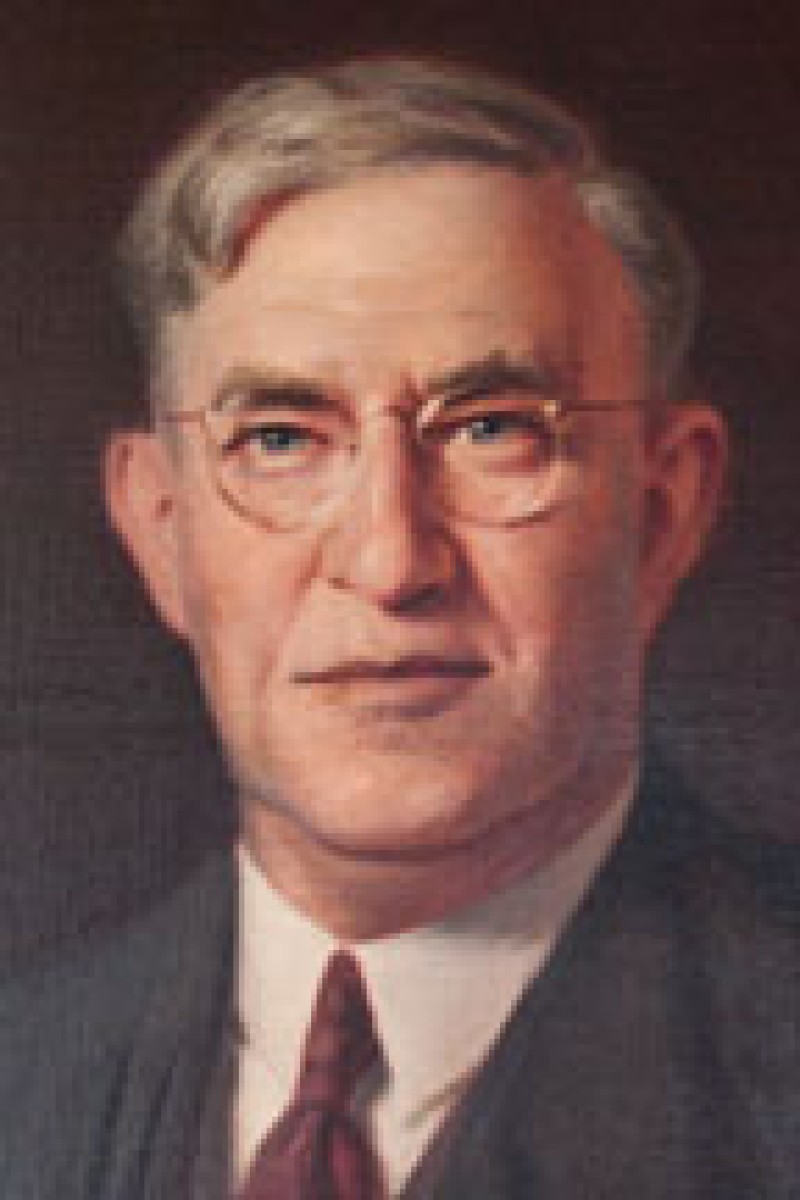Roy Hughes Williams
Roy Hughes Williams pursued a lengthy and successful judicial career. Biographical sketches and obituaries of Williams contained comments that throughout his judicial career he strove to interpret the law as a guide for society and a guarantee of its fundamental rights. The writers all observed that Williams held the view that the Constitution and the common law should be interpreted liberally to meet the needs of the times and saw his opinions reflecting the belief that justice could not be achieved in an ever-changing world if the law remained static.
Williams was born in Milan, Ohio on Sept. 1, 1874 to Charles Ronald and Helen Hortense Hughes Williams. Williams attended the Milan city schools, graduating in 1890. He then attended Western Reserve Normal School in Milan and Oberlin Preparatory School, where he graduated in 1891. Williams attended Oberlin College for two years before transferring to the University of Michigan, first to study literature, then to pursue a bachelor of laws degree that he earned in 1897. Williams was admitted to the Ohio bar, after achieving the second highest grade on the state bar exam in 1897 and opened a law office in Sandusky.
Williams first sought elective office in 1900, when he won a narrow 73-vote victory as Erie County prosecuting attorney and took office in January 1901. Williams was re-elected to a second term in 1903. During his two terms, Williams earned recognition for his use of Ohio’s Valentine Anti-trust Act to vigorously prosecute bridge contractors working in Erie County who colluded to rig bids for construction and repair contracts. Also, Williams prosecuted Oliver W. Marble for providing Christian Science treatment for a fee and obtained a guilty verdict. The Erie County Court of Common Pleas dismissed the verdict and Williams appealed to the Supreme Court. He successfully argued the case, The State of Ohio v. Marble (1905), and the Supreme Court overruled the trial court and reinstated the guilty verdict. Williams declined to run for a third term as county prosecutor and left office in 1907 to return to private practice.
In 1914, Erie County voters elected Williams to the Erie County Court of Common Pleas bench for a six-year term. During World War I, the 44-year-old judge was granted a leave of absence from the court to enlist as a private in the U.S. Army. Williams returned to the bench following his discharge and, on Aug. 26, 1920 and became the first judge in Ohio to impanel 12 women for a jury trial. Williams was re-elected to a second term. While on the common pleas court, Williams gained a reputation for promptly disposing court cases, leading an Erie County historian and local attorney to comment that such action was a “new sensation to the lawyers of this bar.” Voters elected Williams to a term on the 6th District Court of Appeals in 1924 and re-elected him to a second term in 1930. During Judge Williams’ tenure, the 6th District Court of Appeals rendered more than 1,200 decisions with the judge being cited as the author of 350 opinions that were published in volumes 17-49 of Ohio Appellate Reports.
Williams defeated Justice Howard L. Bevis for a seat on the Supreme Court in 1934 in the November election. Williams later defeated Will P. Stephenson in November 1936, to win his first full term on the high court bench. He earned re-election for a second full term on Nov. 3, 1942.
Williams’ reported opinions appear in volumes 129-147 of Ohio State Reports and include his dissenting opinion in Federal Housing Authority v. Guckenberger (1944). That dissent later was adopted by the U.S. Supreme Court to form its majority opinion and reverse the decision of the Supreme Court of Ohio, 323 U. S., 329 (1945).
The case Federal Public Housing Authority, appellant v. Guckenberger, Auditor, et al., appellees (1944) includes the dissent of Roy Williams and Charles Zimmerman’s concurrence with the dissent objecting to the majority opinion of Chief Justice Carl Weygandt concerning the ability of the State of Ohio to tax an agency of the federal government and whether the federal government agency being taxed was carrying out a government function or acting as a private business.
On Jan, 2, 1945, Justice Owen J. Roberts, writing for the U.S. Supreme Court, delivered the opinion that echoed Williams’ arguments that slum-clearance and public housing construction were lawful activities of the federal government to promote the general welfare and that lawful corporate agencies wholly owned by the federal government were immune to local and state taxes. Justice Roberts’ opinion covered three cases heard on appeal from Ohio, City of Cleveland v. United States et al. (1945), Boyle, County Treasurer of Cuyahoga County v. Same, et al. (1945), and Federal Public Housing Authority v. Guckenberger, Auditor, Hamilton County, Ohio, et al. (1945).
Williams missed much of the 1945 session of the Supreme Court due to illness, but recovered sufficiently to actively participate in the Court’s 1946 fall term. On the afternoon of Dec. 18, 1946, four days after the Court’s recess for the Christmas holidays, while drafting an opinion to a recently heard Court case, Williams died of a heart attack at age 72.
Williams married Verna Lockwood on Dec. 7, 1898; the couple had no children.
A poem written by Presbyterian missionary Dr. S. Hall Young was included in a memorial to Justice Williams to characterize his life:
“Let me die working,
Still tackling plans unfinished, tasks undone,
Clean to the end, swift may my race be run…”
Funeral services were conducted at the Old First Presbyterian Church of Sandusky on Dec. 23, 1946. Burial took place later that afternoon in Milan Cemetery in Milan, Ohio.

b. Sept. 1, 1874
d. Dec. 18, 1946
100th Justice of the Supreme Court of Ohio
TERM
Jan 1, 1934
to Dec 18, 1946
